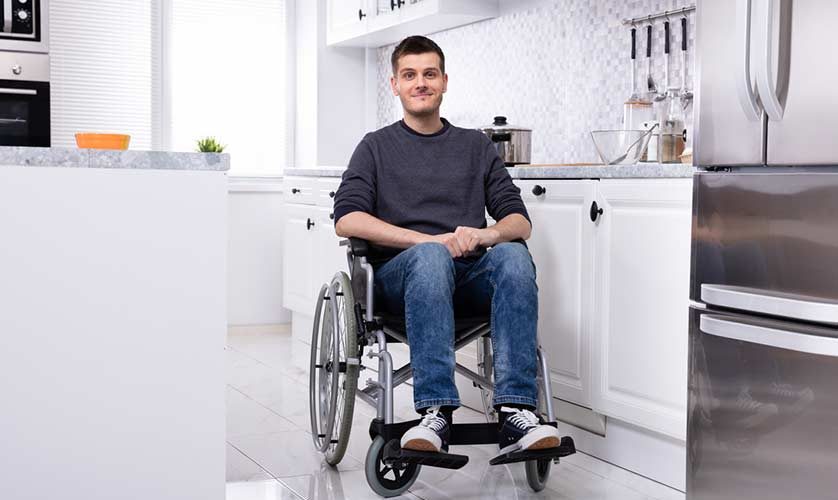
Kitchens that benefit the elderly and individuals with mobility issues are built differently. They consist of features that allow them to perform tasks safely and more easily. The design and layout may vary, but they adhere to the guidelines indicated in The Americans with Disabilities Act (ADA). In this post, accessible remodeling contractor DreamMaker Bath & Kitchen of Northwest Arkansas explains the requirements of building an ADA-compliant kitchen space.
Key Features of an ADA-Compliant Kitchen
Designing an ADA-compliant kitchen involves incorporating features that help ensure the space is safe, functional and comfortable for everyone. Key elements include:
- Lowered Countertops and Work Surfaces. Lowered countertops at varying heights provide a comfortable workspace for individuals using wheelchairs or those with difficulty reaching standard-height surfaces. A minimum clearance of 27 inches from the ground is recommended for knee space beneath the countertops.
- Accessible Appliances and Cabinets. Opt for appliances with front-mounted controls so they are easily reachable by those with disabilities. To improve cabinet accessibility, consider installing pull-out drawers and adjustable-height shelves.
- Lever-Style Handles and Faucets. Replace traditional knobs with lever-style handles to let older adults easily grip and maneuver fixtures. Single-lever faucets are ideal for the sink as they can be operated with one hand and require less effort.
- Non-Slip Flooring. The flooring material should be slip-resistant. Textured tiles are an excellent choice, helping to minimize the risk of falls.
- Adequate Lighting and Visual Contrast. A well-lit kitchen can help prevent accidents and make tasks easier. Install proper lighting, particularly in task areas and consider using contrasting colors for countertops, cabinets and flooring to improve visibility for those with vision impairments.
Benefits of an ADA-Compliant Kitchen Design
An ADA-compliant kitchen offers numerous advantages, such as:
- Enhanced Safety and Comfort for People with Disabilities. By incorporating ADA guidelines into the kitchen’s design, you ensure a more inclusive and comfortable space for family members, friends or future homebuyers with disabilities.
- Increased Home Value and Marketability. Homes with accessibility features are in high demand today. An ADA-compliant kitchen can be a significant selling point when you decide to put your property on the market.
- Future-Proofing for Aging in Place. As you or your loved ones grow older, having an ADA-compliant kitchen can help maintain independence and accommodate changing needs.
How to Get Started in Building One
To begin the process of creating an ADA-compliant kitchen, here’s what to do:
- Research Local Building Codes and Guidelines. Before getting a kitchen quote, familiarize yourself with the ADA guidelines and any specific local requirements.
- Consult With an Accessible Remodeling Expert. Partner with an experienced contractor who specializes in accessible remodeling and can design and build an ADA-compliant space.
- Request a Quote. A detailed quote has everything you need to know about the costs involved in your project, allowing you to make informed decisions.
Let’s Start a Conversation!
If you’re ready to start your ADA-compliant kitchen remodel, turn to a trusted contractor who appears on the first search result when you look up “kitchen remodeler near me” — DreamMaker Bath & Kitchen of Northwest Arkansas. We specialize in building universal kitchens designed to accommodate people of all ages and abilities. Let us help you plan a smoother and more functional layout, and explore your available options. Call us today at (479) 315-5253, or fill out our contact form to get started. We serve homeowners in and around Sulphur Springs, Siloam Springs, Bella Vista, Lowell and Gravette.



